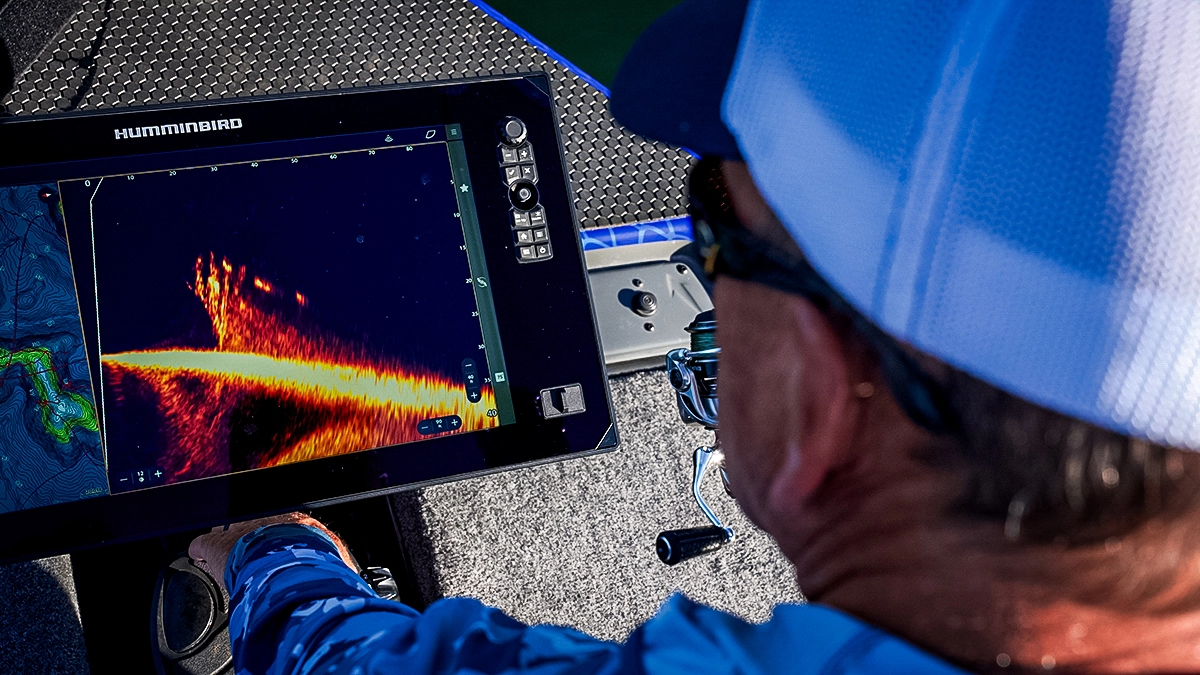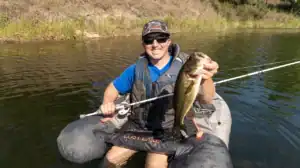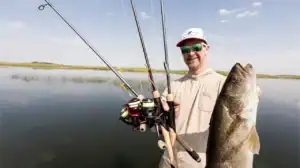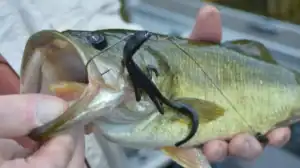Jimmy Houston has mixed feelings about forward-facing sonar. He doesn’t want to come off like a grumpy old-timer and say it should be banned. He uses LiveScope, which shows real-time movement of fish, at times and enjoys studying how the fish react to his baits. His point is, it can go too far. Many of the young guns who grow up fishing video-game style are missing out on some of the basics that will make them a better angler, Houston said.
“Forward-facing sonar has taught a lot of younger people to stop ‘fishing.’ They’re hunting now,” said Houston, one of the sport’s all-time greats. “They’ve got their heads down, staring at that screen, and they won’t even make a cast until they spot a fish. That’s really changed the game, in my opinion.”

Houston has seen it happen before. He remembers when the Alabama rig first came out and It took the fishing world by storm. The rig, which allowed fishermen to imitate a small school of baitfish by presenting several swimbaits on one rig, was the craze for a while. But eventually, it proved so effective that it was banned by some tournament circuits, though it’s still allowed for recreational fishing.
“I remember when we were out filming a television show and a guy near us caught a 5-pound bass,” Houston told Wired2Fish. “I interviewed him and asked what he liked about those Alabama rigs and he told me, ‘It helps average fishermen like me catch big bass like you.’ I thought that was a good answer.

“It’s the same way with LiveScope. It helps the average angler. But on our show, we emphasize that it’s just one tool. Don’t let it make you stop fishing.”
Denny Brauer, another legend in competitive bass fishing, agrees. He wonders if some of the new-school anglers are missing out by relying on a machine to teach them where and how to fish.
“When it comes to tournament fishing, so much of it is decision-making, reading the conditions,” he said. “Time on the water is so important. You learn subtle little things that you can’t pick up through your electronics.
“I spent so many years guiding, even on days that I didn’t want to be out there, and I learned so much. I don’t know if there’s a shortcut to that.”

Rick Clunn, a legend on the B.A.S.S. professional circuit, is a classic example of an angler who has prospered by reading the conditions. He didn’t need forward-facing sonar to catch bass. Better than anyone else on the tour, he has tuned into the bass’ world to get clues as to what the fish were doing.
“Awareness of nature constantly gives you clues,” he told Wired2Fish. “You can look in the live well and get information on what they are feeding on. If they spit up crayfish, you know what type of lure to use. I also watch the birds and the baitfish. If I find an area that has a lot of big gizzard shad, I know there’s a chance there are big bass around.”
There’s little doubt that forward-facing sonar has opened a new world of opportunity for bass fishermen, though. Larry Nixon, who retired from the pro ranks after a long career, has seen the changes.

“In the past, we didn’t know how to catch those bass that were suspended and roaming,” he said. “With forward-facing sonar, they’re no longer protected. You might be out there in 50 feet of water and see one 50 feet in front of the boat and fire a cast that lands right on its head and you catch him.”
Still, Nixon is more comfortable fishing old-school, relying on tactics he learned through years of guiding and competing on the pro circuits. He built a legendary career by targeting grass, stumps, brush and ledges using everything from plastic worms to bass jigs to lipless crankbaits.
“A bass is still a bass, anywhere you go,” Nixon said. “I know their daily and yearly patterns as well as anyone in the universe. That much hasn’t changed.”
Houston agreed that the more bass fishing changes, the more it remains the same.
“There are a lot of these younger pros who are really good at reading their electronics who don’t know how to work a Zara Spook, slow roll a spinnerbait or how to stroke a jig,” Houston said. “What we push on our show is to keep using LiveScope as part of your arsenal, but keep paying attention to what nature is telling you.”










